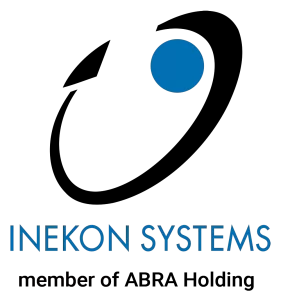NEWS
The state is a demanding client, but one that can be satisfied thanks to a high-quality management system
In January 1928, the new central banknote printer was just starting production; by the end of the same year, it had 133 employees. Today, almost 100 years later, Státní Tiskárna Cenin (STC, State Printing Works of Securities) is just as important as before albeit a bit more modern, and boasts a significantly larger production portfolio as well as nearly 400 employees. And one thing that helps make sure it all runs like clockwork is our BNS. We had an interview with the finance director of the company, Milan Drahoňovský, and asked about this collaboration – one that fills us with enthusiasm and also a bit of pride.
As a state company founded by the Ministry of Finance, do you have any special requirements regarding a management information system?
Our output is of course rather specific. In short, one could say we produce everything you carry in your wallet, especially banknotes and your documents. Yet we also produce securities for state organizations (e.g., tobacco and alcohol stickers).
The fact that our main client is the state does not make our situation easier at all. They are very demanding clients, well prepared for discussions about business transactions, and generally drive a hard bargain.
BNS will be connected to your new ERP. Did the participation of our colleagues from INEKON SYSTEMS, who already knew STC from previous collaboration, make this connection easier?
The implementation of the new production system was a significant task, especially due to its complexity. In addition, this is the first change in about 20 years. The original system had been thoroughly developed and adapted to the company’s needs, hence the implementation of a worthy successor was a real challenge for everyone – for the implementing company and also for our own employees.
Another challenge was the integration of the new system and other supporting systems, including BNS. The knowledge of our company from the previous collaboration and the careful approach of INEKON SYSTEMS employees were great assets in that area.
BNS has been accompanying STC since 2007, and we consider it a very useful tool. STC’s calculation system is very complex and utilizes matrix cost calculations. It is continuously audited by external companies and institutions and so far this has always been successful – in turn giving weight to our claim of offering cost prices to state institutions.
A number of consultants have been continuously caring for STC for 13 years. During the integration of BNS into the new ERP, it was precisely this experience that led to shorter preparatory times and faster reactions to deviations we needed to address.
Together with the transition to the new core system, you also implemented new BNS 4.0 management support. Even though you have only been using it for a few months, can you name any advantages from the unification of the Excel and web environments?
My opinion is that a company can only be successfully managed if one has accurate data and can correctly interpret them. In addition, STC’s production is not based on a classical production line. Depending on the customer’s requirements and the complexity of the given product, a customised production process may need to pass through a highly varied series of production centres and machines. Each centre may focus on a different aspect of the final product depending on the scope of the production operations. This also entails high requirements for cost budgeting, cost monitoring and the evaluation of production and economic data. The recently implemented web interface will be used for both basic and advanced communication with the company’s management. We are currently in the process of familiarizing ourselves with the tool, and have already recorded a significant amount of positive feedback during the introduction and training of key users. Personally, I hope it will become a regular part of the work processes of each manager responsible for their cost centre.


Thanks to the web environment and its ease of access, data are now available to a wide range of users. Furthermore, the easy-to-navigate dashboards allow everyone to see the same numbers, even though from their own perspectives. Do you see this as a good path towards greater understanding?
Understanding and correctly interpreting data is key. It is logical that each user will first and foremost search for the factors that influence their own work, or which they can alter through their work. A clearly defined data structure, knowledge of the origins of the values in the report and an understanding of them are fundamental for the economic management of a company.
Aside from reports and views of the economic data, users also need to receive corresponding support from the financial department, which is responsible for preparing all regular and ad hoc reports. By this, I mean the correct interpretation of data set in the right context – after all, no two situations are exactly the same.
There may be several causes of situations where we need to address higher costs per machine-hour of work. And it is up to us to guide our internal client via the economic values and help them eliminate this risk for the next time, or provide arguments that will help them handle the situation themselves. In many cases, we are forced to choose between several variants and to try to find a consensus between departments with different interests. In such cases, the interests of the company as a whole must prevail.



Do the easy-to-create dashboards, which you can also now easily create on your own, provide financial savings and other benefits?
Having the option of quickly adapting dashboards without the need to contact an external partner is certainly an advantage. Flexibility is a benefit we certainly appreciate. The financial benefit from the viewpoint of the costs required to adjust the tool is, I think, secondary. More experienced users can make simple adjustments on their own, and the playful approach of the tool invites further improvements.
As far as I know, you only prepare a single annual plan…
Yes, that is true. We only have a single annual plan that we present to our founder – the Czech Ministry of Finance – for approval. It is the basic document used to set the economic values in the company. However, we can model its development – this happens in the second half of each year via a forecast in which we need to react to the development of demand for our products.
This year, especially, we have considered several versions (mutations) of our plan, and I am sure we were not the only ones to do so. It may seem that STP is immune or at least highly resilient to significant economic fluctuations since it has a stable product base. Yet the opposite is actually true, and the experience from this year’s pandemic strongly indicates we need to be able to react to quick changes on the market. The closure of the state borders and significantly restricted mobility of Czech citizens meant a prominent drop in demand for passports and other documents – one of our key product groups.
Already this March, we adopted a set of measures aimed at ensuring the smooth operation of the company, the safety of our colleagues, and also successfully surviving the year from the viewpoint of our economic values.
After switching to BNS 4.0, you did not take advantage of almost any new-user training offered by INEKON SYSTEMS. Is BNS really that easy and user-friendly?
Indeed, there was just a single training session run by INEKON SYSTEMS. That focused on selected key employees of the financial section, who had previously relied on the desktop variant and are specialists in the area of reports. For us, it was easier to grasp the new information at expert level and then transmit this information within the company using specific figures as examples to other users of the new tool. Training people using specific figures that are known to the users seems to be a practically beneficial approach, and our discussions over individual reports also confirmed this. Internal clients then asked detailed questions, seeking specific answers for their everyday needs.

Can you identify some benefits already, even though you have only been using BNS 4.0 for such a short period of time?
It is still too soon to name specific benefits of the web-based BNS, yet our expectations are rather high. The goal is to bring and present economic values as well as controlling views to a wider group of key managers to facilitate better planning and evaluation, eliminate deviations, and interpret economic data in the context of one’s specific work. We have expectations I hope will be met through cooperation with other colleagues.
We want to ensure that information flows are flexible, while obtaining various views of data should be fast and flexible, too. This development of various tools needs to be supported by an accompanying change in the culture and behaviour of colleagues. It is a shift from the provision of structured data to a direction that will allow faster identification of problems, their analysis, the finding of adequate solutions, and their implementation. Without constructive communication and a collaborative approach, this shift will never happen. We are all in the same boat after all.
Contact us
Newsletter
Read the latest news from financial planning and BI data processing, as well as invitations to interesting events and webinars. We will send you inspiring content a maximum of 4 times a year.
Newsletter
Read the latest news from financial planning and BI data processing, as well as invitations to interesting events and webinars. We will send you inspiring content a maximum of 4 times a year.
© 2023 INEKON SYSTEMS s.r.o., the member of the ABRA Holding group, Jeremiášova 1422/7b, 155 00, Praha 13, Czech Republic, IČO: 27252167. Processing of personal data policy.



